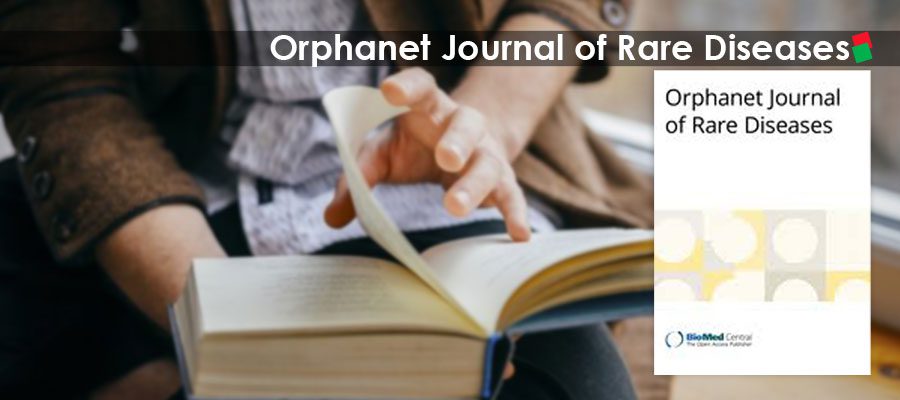Mohamed Azmi , Ahmad Hassali
Orphanet Journal of Rare Diseases2016
Background:
The state of rare diseases
Rare diseases are serious and can be life threatening. Even where treatment is available, the disease will likely be a lifetime condition for the patient. While they are characterized by their rarity (less than 1:2000 in Europe, 1:1500 in United States of America, or 1:2500 in Japan), they can collectively affect 1 in 15 persons worldwide .Therefore, while the prevalence of rare diseases in each country is low, total number of people who suffer from rare diseases could be about 400 million worldwide. It is important to note that the prevalence of rare diseases varies based on the type of disease, with some rare diseases affecting 1:100,000 people or less .This rarity heightens the isolation and limited treatment that patients with rare diseases often face.
Despite being “rare,” in Southeast Asia, over 45 million people, or about 9 % of the region’s population, suffer from rare diseases .This number remains contested and it could be even higher. Research and active monitoring of rare diseases is not a priority in Southeast Asia largely due to a lack of resources and inadequate funding. As such, mysterious child deaths in the region may have underlying genetic correlations thus under-reporting the true burden of disease. Out of the eight thousand rare diseases currently characterized in the world, it is likely that several of these rare diseases occur more regularly amongst Southeast Asian populations. For example, Moyamoya disease, which is recognized as a global pathology predominantly affecting children and young adults, is largely present amongst Asian ethnicities .Given the lack of epidemiological data, rare disease landscape and management remain unclear throughout the region. While Southeast Asian countries have made noticeable progress towards universal health care coverage, the focus has been on primary preventive care and acute care .Consequently, funding for rare disease research and treatments remains a central challenge.
Rarity of diseases limits understanding and appropriate healthcare provision
Due to the limited number of individuals affected by a rare disease, there is lack of experience in managing rare diseases within the local community. Many cases unfortunately result in initial misdiagnosis or failure to diagnose, inadequate treatments, or lack of available treatments. Moreover, without intervention or incentive by the regulatory bodies, pharmaceutical industry may not have the economic motivations to develop treatment for rare diseases given the high cost and small patient base. As such, due to their largely neglected status, pharmaceutical treatments for rare disease t are also call as “orphan drugs.” Because orphan drugs can be expensive and low on public health priority (low prevalence), they were often not reimbursable through public fund. Hence, patients with rare diseases may appear marginalized as most of the funding for their treatment may come from out of pocket, public-private partnerships, charitable organizations, and industry groups (patient assistance programs) .Moreover, due to the limited understanding and medicinal support, patients may often feel socially and psychologically isolated.
Progress in public awareness and investment opportunities
Public awareness and investment opportunities for rare diseases have increased in recent decades, largely because of work done by patient support groups and The Orphan Drug Act in 1983 in the United States. The Orphan Drug Act creates financial incentives for the research and production of orphan drugs, including tax incentives, patent protections, and clinical research subsidies . Following this enactment, there was a noticeable increase in the number of designated and approved orphan drug by U.S. Food and Drug Administration every decade; from year 1983 (2), 1993 (90), 2003 (238) until 2013 (439) . Continued efforts from the United States spurred the Rare Diseases Act in 2002, establishing an Office of Rare Diseases as a federal entity and increasing national research and investment in the development of diagnostics and treatments for patients with rare diseases .Other countries have followed suite by introducing their own legislation recognizing orphan drugs in the past two decades, including Singapore (1991), Japan (1993), Australia (1997), Taiwan (2000), Europe (2002) and South Korea (2003). Despite the progress of orphan drugs and rare disease legislation in some of the countries, disparities remain in the availability of effective treatment for rare diseases globally due to the lack of scientific knowledge and financial incentives. Hence, one of the central suggestions by the World Health Organization in the recent Priority Medicines Report 2013 is to prioritize orphan drugs, by developing new mechanisms to promote the development of basic rare disease research into important treatments.
Given the current environment and complexities, the need to understand rare diseases in Southeast Asia is imperative in order to offer suggestions on how the region can better tackle rare diseases and potentially improve healthcare on both a country and regional level.
Method:
Study setting
In this report, we will review the state of rare disease management in Southeast Asia around several key themes and benchmark them against best practice countries. We have chosen to focus on the six major countries of Southeast Asia: the Philippines, Singapore, Malaysia, Indonesia, Vietnam, and Thailand. These countries were specifically selected on the grounds of economic development, fairly developed national health programs, and a capacity for regional cooperation and openness. As best practice countries, we have reviewed corresponding rare disease management in five countries: France, Canada, Australia, Taiwan, and South Korea. We have designated these countries as best practice, as key opinion leaders most frequently referenced them and their experience were widely reported in existing literature.
Data sources
We used multiple sources to obtain relevant information related to rare diseases according to the selected themes. We employed the World Health Organization’s framework for action in strengthening health systems within which to review the status of rare disease management in the focus countries. To supplement the World Health Organization’s evaluation, we reviewed key literature and conducted stakeholder interviews with clinicians, policymakers, advocacy groups, and pharmaceutical experts. The primary and secondary research identified six core themes that were used as criteria for evaluation across the focus geographies and best practice countries.
A comprehensive literature review was performed in June 2014 using electronic databases (PubMed, Google Scholar), published policy documents, and Ministry of Health websites using directed search requests. In addition, supplementary themes were also explored on the management and regulatory requirements of orphan drugs in target benchmark countries. Key opinion leaders were identified through government channels and expert connections. This group included clinicians, policymakers, advocacy groups, and industry leaders. They were consulted using a semi-structured interview approach to improve the understanding of local and regional rare disease issues. The semi-structured interview guide focused on four main issues: i) governance: definition, national strategy or plans, physicians’ involvement, research on rare disease; ii) access: access for the treatment and orphan drugs, support programs, public awareness; iii) infrastructure: clinical practice guidelines of rare disease, patient registries, neonatal screening programs, and center of expertise; and iv) opportunities: training, capacity-building projects, support group, and any strategies suggested.
Analysis:
Information was extracted according to six themes. These themes were used as anchors to identify and assess the national initiatives of rare diseases in the six Southeast Asian geographies as well as the best practice countries. The assessment criteria included:
- Healthcare system
- Governance
- Patient advocacy and rare disease awareness
- Clinical expertise and patient management
- Funding
- New-born screening of rare diseases
- Clinical expertise and patient management
Clinical expertise and patient management of rare diseases varies widely across the region, need to be improved. For example, patient registries are critical in the management of rare diseases; however, there are no national rare disease patient registries in the region. Rather, most countries have separate lists or databases in individual institutions or treating facilities. This leads to potential risks such as redundant entries of patients, producing incomplete data on the prevalence of rare diseases. No country has proposed improvements, except for Thailand who plans to create a nationwide database of lysosome storage diseases.
In addition, there is a lack of clinical rare disease expertise across the region. There are only a limited number of genetic specialists and only a few institutional centers that offer specific services to treat rare diseases. For example, in Thailand, there are only 22 geneticists available to serve the whole population of 67 million people, with most of them located in major cities. Moreover, there is no professional society focused on rare diseases to support those specialists, collecting and sharing local experiences. As a result, genetic specialists often do not have the critical mass to influence the direction of funding and availability of specialized care.
In 2014, Care for Rare, a pan-Canadian research team has developed an online database named Phoneme Central. It is created as a hub to bring doctors and scientists working on rare diseases together. This online database is a great initiative to help clinicians and rare disease scientists all over the world to share their case records and information in the database, which can be used by rare disease clinicians in SEA region.









